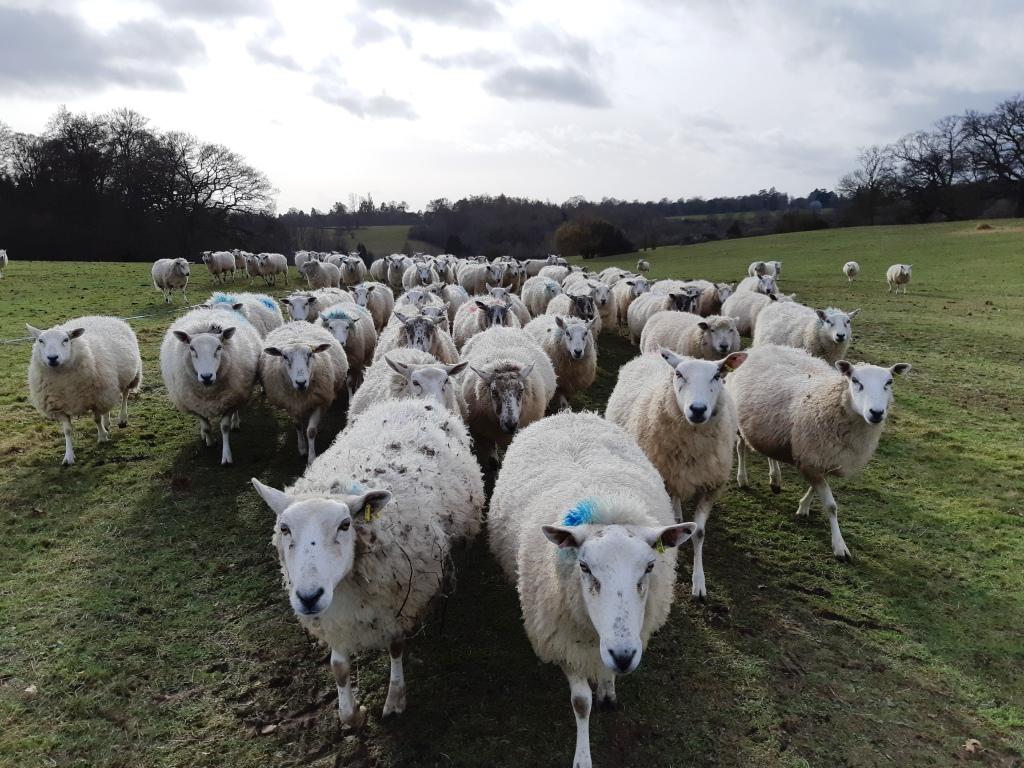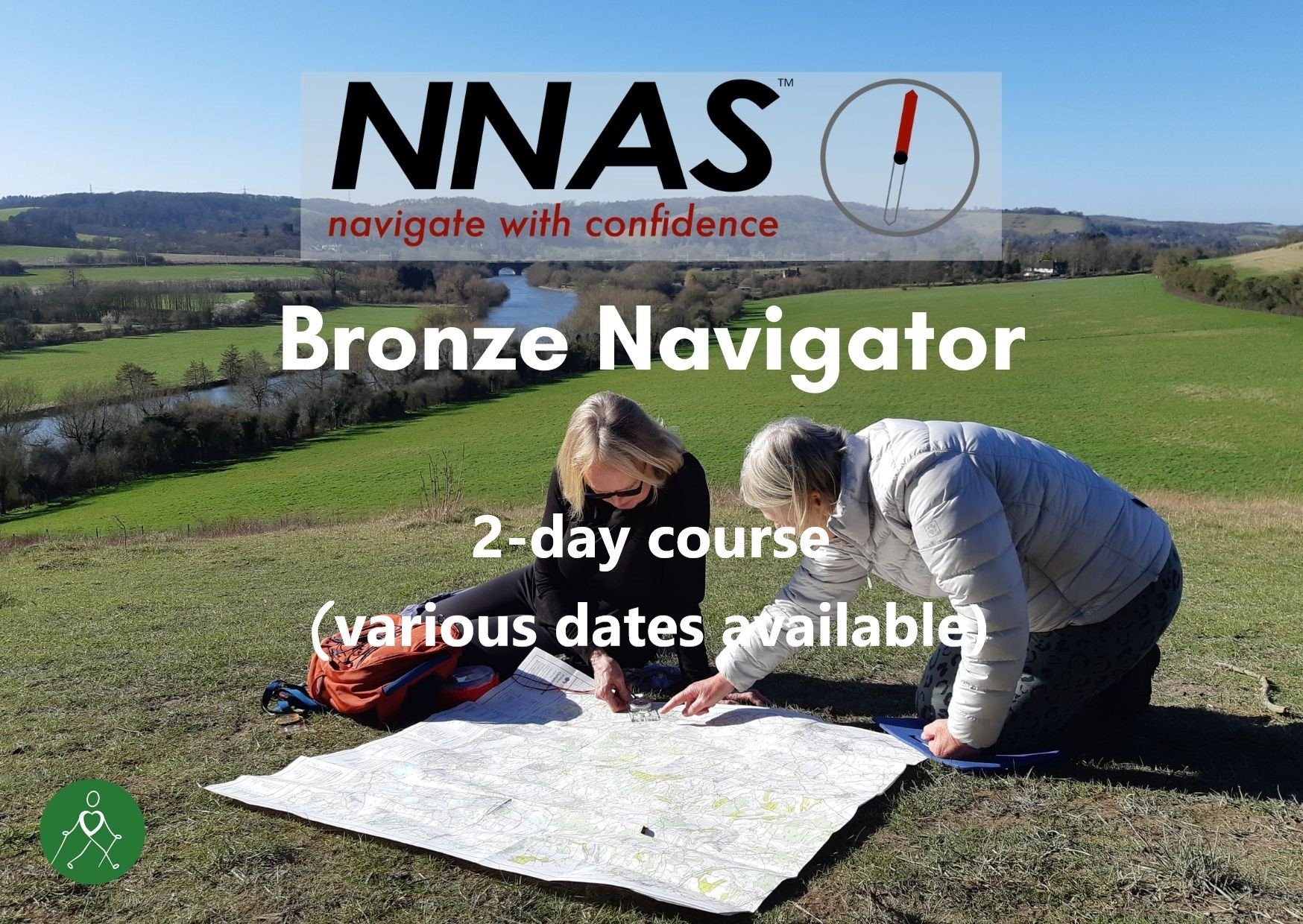Bulls Bag's & Butterflies - World Nordic Walking Day!
/Chilterns Walking Festival
This is the second of our Perambulations from the Sofa to celebrate the Chilterns Walking Festival. The opening weekend of the Festival coincides with World Nordic Walking Day and we had planned to grab our Nordic walking poles for this amazing 8 mile walk in the Oxfordshire Chilterns - it’s one of our favourites packed with wild flowers, butterflies and views to die for!
Our adventure starts from the historic village of Lewknor, an early Saxon spring-line settlement nestling at the foot of the Chiltern Hills, just off the ancient Icknied Way. The village name, Lewknor, is derived from Leofecanora meaning Leofeca’s slope, the nor suffix meaning spring. In mediaeval times the village was part of the estate of All Souls College, Oxford and much of the village remains in the College ownership today.
Time to Get Nordic Walking
We must be going the right way - the signpost shows Nordic walkers!
We head out towards to hills passing by The Knapp, a small hill topped by a reservoir and once the site of an early Iron Age settlement. As the panorama of our walk unfolds before us the yellowhammers in the hedgerows are singing for their ‘little bit of bread and no cheese’.
The Icknield Way
We soon reach the broad green track of the Iknield Way, now part of the Ridgeway National Trail. Thought to be one of the oldest traceable routes in Britain, this prehistoric trackway follows the chalk hills of southern England linking the Norfolk and Salisbury Plain.
The Icknield Way / ridgeway National Trail
“Much has been written of travel, far less of the road... The earliest roads wandered like rivers through the land, having, like rivers, one necessity, to keep in motion... ”
Stepping out along the trail the way becomes more tree-lined offering some welcome shade from the warming spring sunshine. We mused how our brief encounter with this ancient road, travelled by wayfarers over millennia, would in some small way contribute to its continued flow through the passage of time.
Along the Icknield Way
The Ridgeway & Oxfordshire Way
Ants in Your Pants!
We leave the Icknield Way / Ridgeway at its intersection with the Oxfordshire Way and find a small path leading onto the lower slopes of Pyrton Hill. Hugging the contours around the hill the now path follows the edge of Shirburn Wood. We are accompanied by butterflies – speckled wood, small white and brimstone – dancing in the dappled shade. The woodland is carpeted green with dog’s mercury and flecks of colour provided by yellow archangel, herb Robert, and sweet woodruff and fading bluebells.
Before long the scarp slope of Shirburn Hill looms before us. Below the dense green upper slope of juniper and box, the grassy hillside is spotted with giant anthills capped with wild thyme. These are home to the yellow meadow ant – English Nature estimate that the anthills are over 100 years old and each is home to about 5,000 ants! No sitting down for a rest just yet!
speckled wood
Anthills on Shirburn Hill
We put our Nordic walking poles to work and effortlessly reach the top - now it is time for a snack break and to marvel at the spectacular wide sweeping views across the Vale of Oxford. The chalk grassland is alive - common blue, small heath and grizzled skipper butterflies flitter around us rarely pausing long enough for the camera!
Shirburn Hill and the vale of oxford
Common blue (male)
common blue (female)
The Old ‘County Top’
Time to walk on... Passing through a field swathed yellow with buttercups, and keeping a watchful eye on the cattle curiously watching us, we enter the shade of the Forestry Commission’s Cowleaze Wood.
Here among the bluebells we can we bag the old ‘county top’ of Oxfordshire – Bald Hill (at 843 feet / 257 m AOD). ‘Old’ because following the 1974 county boundary changes that honour was bestowed on White Horse Hill which lies further west in the Berkshire Downs and is just 2m higher!
Memorial stone, Cowleaze Wood
Hidden deep in the woods is a small monument, a stone plinth from Lincoln Cathedral. It commemorates the crew of a Halifax bomber which had crashed here on 31 March 1944. The aircraft had been returning from the Nuremburg raid to its base at RAF Snaith in Yorkshire when it crashed killing all seven of the crew.
Aston Rowant NNR
We now head out onto open chalk grassland of Bald Hill and the Aston Rowant National Nature Reserve, noted for the large variety of wild flowers, including many orchid species, and butterflies. There are also more juniper bushes and yet more anthills! We take our time here, excited to discover the wonders of nature and to gaze the panoramic views.
white helleborine
Early Purple Orchid
greater butterfly orchid
william morris window, st margaret’s church
William Morris
Many photographs later, we managed to extract ourselves off the hill and descend the chalk track back towards Lewknor. On returning to the village we have time to take a look inside the flint and stone dressed 12th century church of St. Margaret. Among its many treasures we discover two Pre-Raphaelite stained glass windows designed by William Morris, champion of the 19th century Arts and Crafts movement.
Bull’s Bags & Butterflies…?
In true English walking tradition, our walk and exploration of the village ends with some well earned refreshment at the Old Leathern Bottle pub! Perhaps now is the time to explain the title given to this walk - Bull’s Bags & Butterflies? …Just in case you were wondering! It a reference to the flora and fauna which has been a central theme of our walk. In Shakespeare’s Hamlet, Gertrude refers to the early purple orchid as ‘long purples, that liberal shepherds give a grosser name’. One such shepherd name (given to a number of orchid species) is Bull’s Bags! As for the butterflies, they dance around us throughout the walk and then appear as a beautiful white orchid!
Happy World Nordic Walking Day!
Client Feedback
Beautiful walk. Stunning views. Great company and excellent organisation.
It was a fabulous route made even better with the lovely weather and great company. I've added a few more plant names to my limited repertoire. Thank you!
Find out more
Nordic Walking - give your walk a workout!
The Ridgeway National Trail – An 87 miles (139 Km) trail from the World Heritage Site of Avebury to Ivinghoe Beacon in Buckinghamshire.
Halifax aircraft crash - In 2015 BBC Radio Oxford broadcast a documentary about the crash, the crew and some of their surviving relatives
This walk can be enjoyed throughout the year, although please be aware that the flora and fauna interest will naturally vary throughout the seasons. We occasionally include this special walk, or a variation of it, in our group walk programme. However, if you cannot wait, why not use our bespoke guiding service - simply get in touch to discuss your requirements.
All photographs in this article were taken by, and remain the copyright of, the author.

































